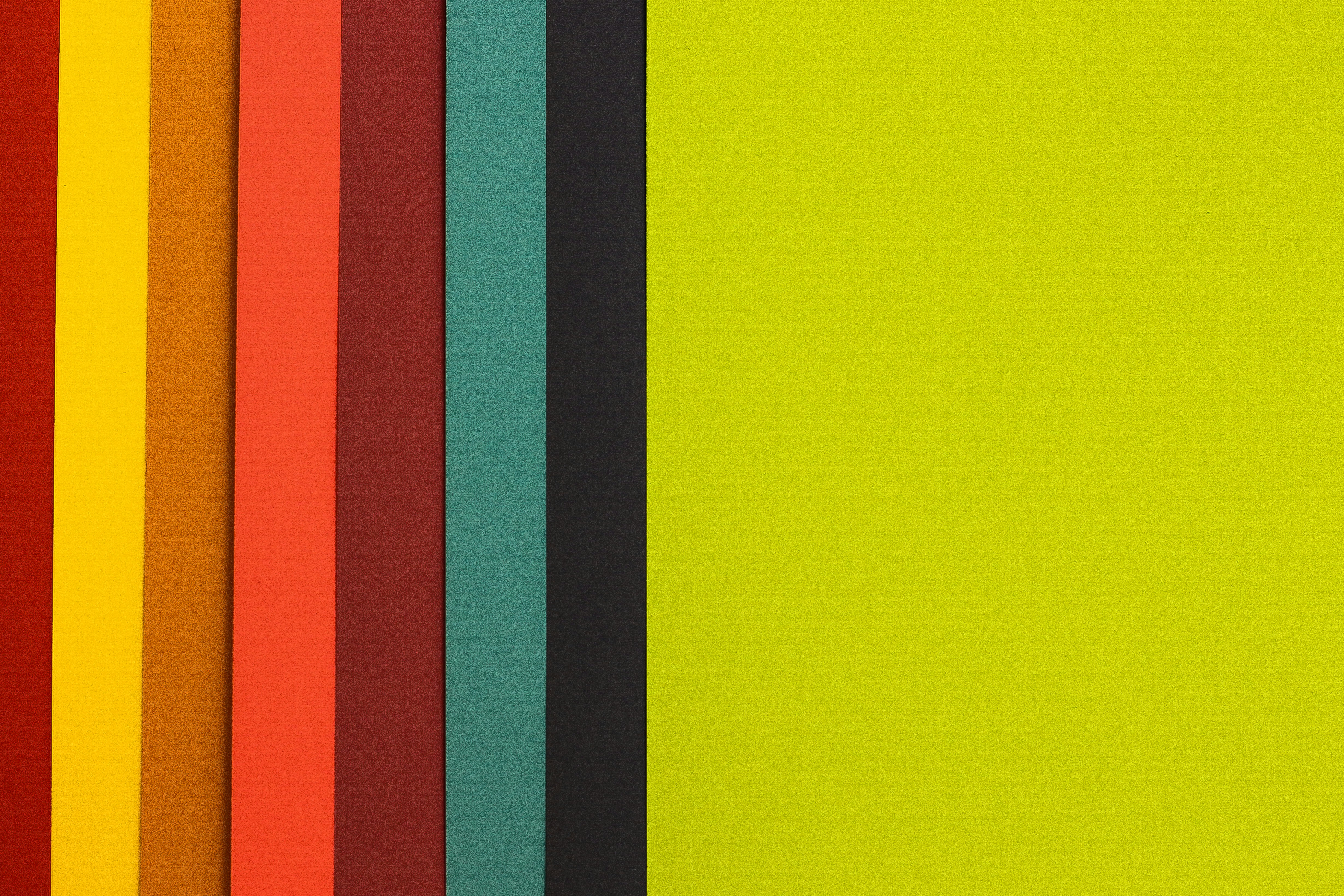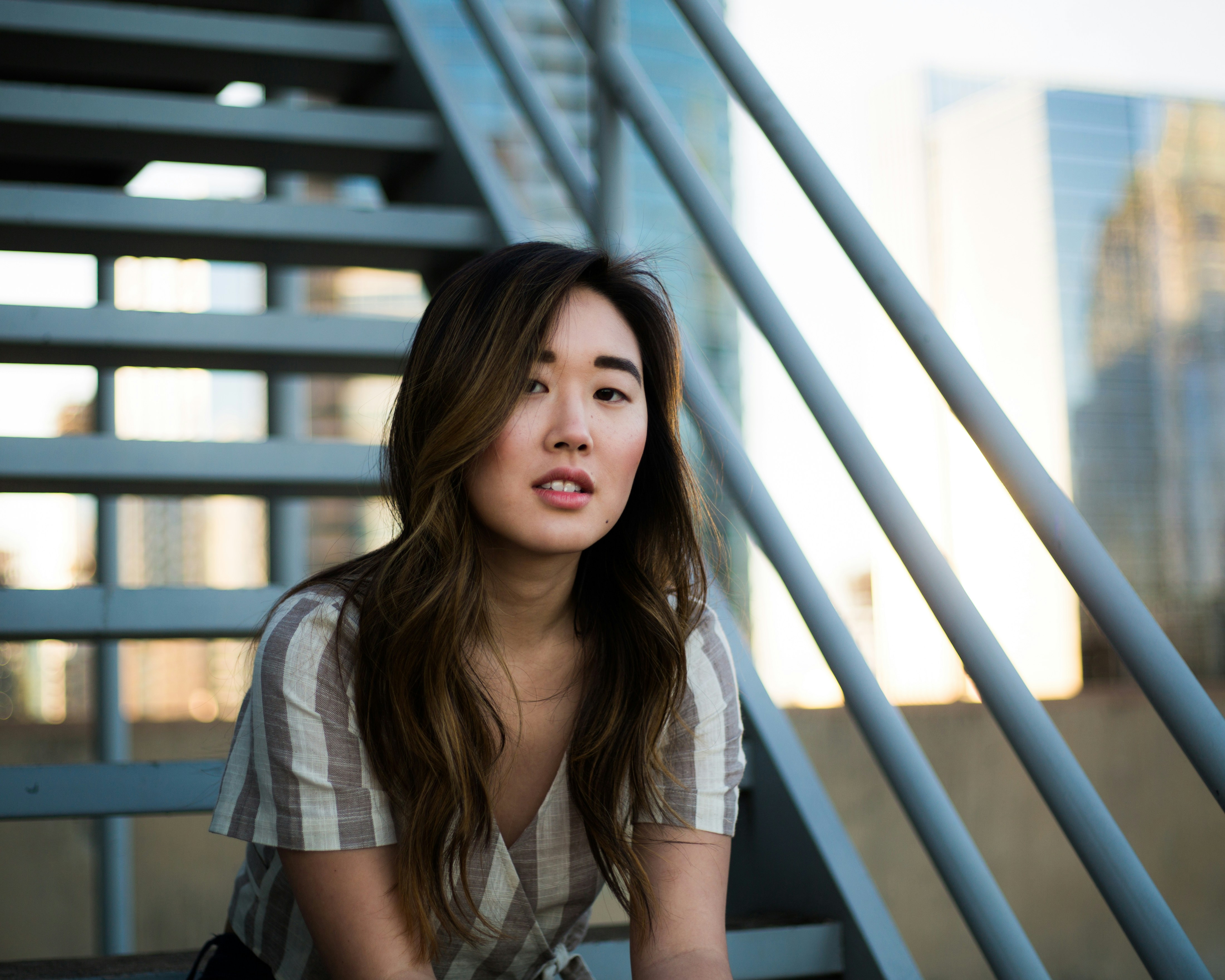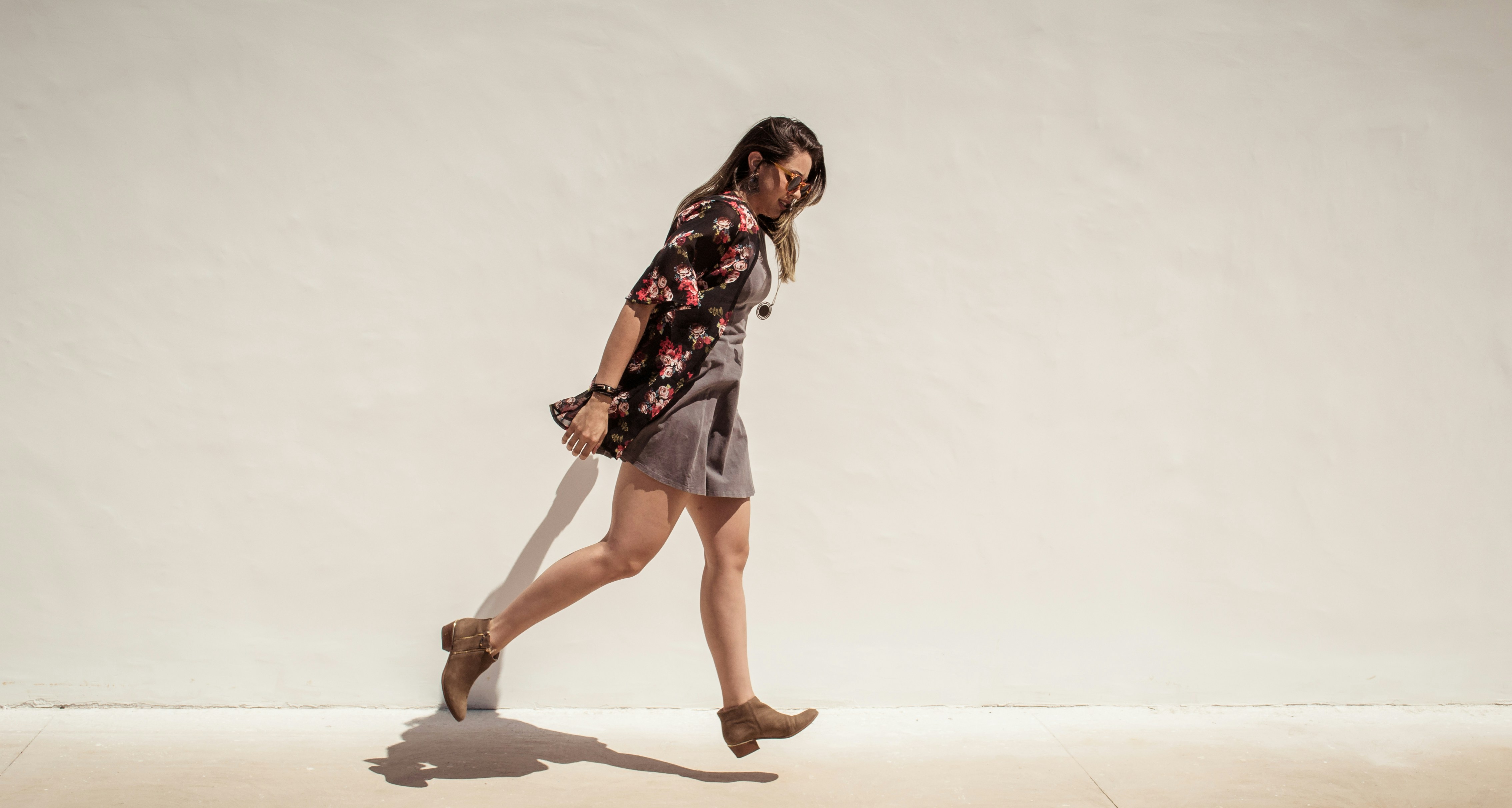How to Find Your Color Palette Despite The Season



Dante Kim
June 24th, 2024
Get your color analysis done
in 60 seconds with WhatColors!
Get your color analysis done in
60 seconds with WhatColors!
Get your color analysis done in 60 seconds with WhatColors!
Are you tired of standing in front of your closet, pondering what to wear for hours? Deciding your outfit might seem challenging; you're not alone. Wanting to learn how to find colors that suit you?Stop feeling overwhelmed and start enjoying the process of picking out your clothes instead. Before discussing color theory and personal style, let's take a moment to appreciate the beauty you radiate and how it will become even more vibrant with the right color palette.
Looking to unlock the perfect color palette that suits you best? WhatColors has designed an exceptional AI personal color analysis app to help you discover your ideal color palette in minutes. Bid farewell to the guessing game and embrace the perfect hues complementing your unique style and personality.
Table of Contents
Color and Personal Style
What is Color Theory?

How Hue, Saturation, and Value Work Together to Create Color
Imagine a giant color wheel – a spectrum of colors where similar colors sit next to each other and opposites lie directly across.
Hue refers to the actual color (e.g., red, blue, green).
Saturation indicates the intensity of the color – a highly saturated color is vibrant, while a low-saturated color is muted or dusty.
Value represents the lightness or darkness of a color. A high-value color is light, while a low-value color is dark.
These three elements interact to create a vast array of colors. For example, take the hue red. A bright red has high saturation and a medium value. A deep red wine color has a high saturation but a low value. A soft pink has a low saturation and a high value. Understanding how hue, saturation, and value work together allows you to see the relationships between colors and how manipulating these elements can completely change the impact of color on your wardrobe.
The Concept of Color Harmony and How It Affects How We Perceive Colors
Color harmony refers to pleasing arrangements of colors based on their relationships on the color wheel. Certain color combinations create a sense of balance and visual appeal, while others can feel jarring or disjointed. There are several color harmonies you can explore:
Complementary colors
These are colors directly opposite each other on the wheel (e.g., red and green, blue and orange). Complementary colors can create a bold and high-impact contrast.
Analogous colors
These colors sit next to each other on the wheel (e.g., blue, blue-green, green). Analogous colors create a harmonious and cohesive feel.
Triadic colors
These colors are evenly spaced around the wheel (e.g., red, yellow, blue). Triadic colors can create a vibrant and dynamic effect.
Understanding color harmony allows you to create intentional color combinations in your wardrobe. You can choose complementary colors for a statement piece or analogous colors for a more monochromatic look.
Related Reading
• How To Know What Colors Look Good On You
• What Color Lipstick Should I Wear
• What Colors Look Good On Pale Skin
• What Color Blush Should I Wear
• Colors That Go With Tan
• What Color Jewelry Should I Wear
How to Find Your Color Palette

Understanding your undertone is key to finding the most flattering colors for your skin. Your skin undertone refers to the subtle color beneath the surface of your skin.
The Vein Test
To determine your undertone, you can examine the veins on the underside of your wrist in natural light. If your veins appear greenish, you likely have cool undertones, while bluish veins indicate cool undertones. If distinguishing between green and blue is challenging, you might have neutral undertones.
The Jewelry Test
Another method is holding silver and gold jewelry beside your face in natural light. If silver jewelry appears more flattering, you likely have cool undertones, while gold jewelry looking better on you indicates warm undertones. If both metals suit you equally well, you have neutral undertones.
Undertones are not always straightforward, and some people may have a combination of warm and cool tones. The best way to find out what really flatters you is to experiment with different colored clothing and makeup.
Analyzing Your Natural Coloring (Hair, Eyes, and Skin) to Discover a Broader Color Palette
Although the undertone is crucial, you must also consider your overall coloring, including the value and contrast between your hair, eyes, and skin. Examining the interplay between these elements allows you to determine whether you have a high or softer contrast.
Warm Undertones and High Contrast
You likely have high contrast and warm coloring if you have dark brown hair, hazel eyes, and olive skin. In this case, you might explore a broader palette that includes warm browns, golden yellows, and rich jewel tones.
Cool Undertones and Soft Contrast
You may have softer contrast and cool coloring if you have light blonde hair, blue eyes, and fair skin. This palette could include soft blues, light pinks, and dusty lavenders. These factors will help you create a harmonious and flattering color palette for your wardrobe and makeup choices.
Exploring Alternative Color Analysis Methods

Tonal Analysis
Tonal analysis is a system that focuses on the value (lightness/darkness) and contrast of your coloring, rather than temperature (warm or cool). This method classifies individuals into five tonal groups:
Light
Light-Medium
Medium
Medium-Dark
Dark
Each tonal group has a corresponding color palette that considers value and contrast to create harmony. For example, individuals classified as Light might look best in soft pastels and light neutrals, while those classified as Dark might find deeper jewel tones and rich neutrals most flattering.
Light, Dark, Bright, Soft Analysis System
Another approach to color analysis centers on four key characteristics. These methods scrutinize your overall coloring, determining whether you lean toward light or dark values and bright or soft saturation.
The light category includes individuals with lighter hair, eyes, and skin.
Dark category has darker features.
Bright individuals boast clear and vibrant coloring, even if their value is light or dark.
Soft individuals have muted, less saturated coloring.
Unlock Your Colors and Transform Your Style
WhatColors helps you find the perfect palette based on your skin tone and determine your season with patented color-matching technology. By discovering the ideal colors for your season, you can avoid those that clash with your skin, eye, and hair colors. Using the WhatColors Nail Color Generator, you can find the perfect nail polish shades to complement your unique coloring.
Unlock your colors and transform your style for free today with WhatColors’ AI Personal Color Analysis app. Download our app for free today on the App Store or Google Play store.
Building Your Personalized Color Palette

Once you've determined your ideal color palette through a seasonal analysis, tonal analysis, or light/dark, bright/soft analysis, it's time to create your core color palette. This palette should have 5-7 colors harmonizing beautifully with your natural coloring. If you resonate with a particular season, choose colors from that palette that flatter you most.
If you identify with a tonal group, select colors that suit your preferences within that designated palette. If you fall into the light/dark, bright/soft category, choose colors from that recommended palette that resonate with you.
Incorporating Accent Colors and Neutrals into Your Palette
While a core palette is your foundation, adding accent colors can bring variety to your wardrobe. Accent colors are those that fall outside your core palette and can be bolder or brighter. For example, if your core palette mainly consists of cool blues and greens, consider adding a warm yellow or vibrant magenta as accent colors.
Neutrals like black, white, grey, and navy are essential for a well-rounded wardrobe. These neutrals can be mixed and matched with your core and accent colors to create various looks. Choose neutrals that complement your overall coloring. If you have cool coloring, opt for cool greys and crisp whites. For warm coloring, warmer greys and ivory tones might be more flattering.
Putting It All Together: Experimentation and Confidence

Color analysis provides a valuable starting point, but experimentation is key to discovering your most flattering colors. Don't be afraid to try different colors and combinations to see how they make you feel. Here are some ways to experiment:
Makeup
Use makeup in various colors to see how they affect your complexion. Notice how certain colors brighten your eyes or enhance your features.
Clothing
Borrow clothes from friends or visit thrift stores to try on different colors and styles. Notice how the colors make you look and feel in natural light.
Accessories
Experiment with scarves, jewelry, and handbags in different colors. Observe how they complement your natural coloring and add personality to your outfit.
Maintaining a Cohesive Wardrobe with Your Color Palette

When shopping for clothes, it's crucial to use your color palette as a guide to create a cohesive and stylish wardrobe. Elevate your shopping experience and build a wardrobe that reflects your personal style:
Focusing on your core colors
Incorporate accent hues strategically
Considering color balance
Utilizing shopping tools
This approach ensures that you make informed decisions while shopping and avoid impulse purchases that may not align with your overall color scheme.
Tips on Building a Capsule Wardrobe Based on Your Color Palette
Creating a capsule wardrobe based on your color palette involves selecting classic silhouettes, high-quality fabrics, and neutral tones while incorporating a few statement pieces. This curated selection of garments offers versatility, timelessness, and functionality.
Choosing items that complement your color palette and can be mixed and matched effortlessly can help you build a stylish and practical wardrobe. This strategy streamlines your outfit choices, saves you time in the morning, and allows you to make the most of your clothing investments.
Related Reading
• What Is My Color
• What Color Looks Best on Me
• What Color Should I Wear
• Best Colors For Olive Skin
• Best Colors For Warm Undertones
• What Colors Look Good On Tan Skin
• What Colors Look Best On Brown Skin
• Best Colors For Cool Undertones
• Best Colors For Warm Skin Tone
• Best Colors for Warm Undertones
• What Season Am I
• What Color Looks Best on Me
• What's My Color Palette
• What Color Season Am I
Color and Personal Style

Your personal style reflects your unique personality and preferences. Do you lean towards classic tailoring, bohemian flow, or edgy silhouettes? When choosing pieces for your wardrobe, focus on selecting items that flatter your body type and align with your aesthetic.
Incorporate Texture and Pattern
While color plays a significant role in your outfit, incorporating texture and pattern adds visual interest and dimension. Experiment with different textures like silk, leather, or knitwear, and add patterns like stripes, polka dots, or florals to enhance your color palette. Mixing textures, patterns, and colors can create a visually appealing ensemble.
Maintain Balance
Balance is key when styling your outfits. When mixing color, texture, and pattern, strive for equilibrium. If you're wearing a patterned top, opt for solid-colored bottoms to avoid overwhelming the look. Incorporating bold textures can be balanced by keeping the rest of the outfit more muted. This balance helps create a cohesive and polished appearance.
Try AI Personal Color Analysis For Free Today
Have you ever felt overwhelmed when choosing the right colors to wear? What if there was a tool that could help you find the perfect palette based on your unique skin tone? Choose WhatColors, an innovative app that removes the guesswork from color coordination.
Unlock Your Season
WhatColors uses patented color match technology to determine your season based on your skin tone. The app pinpoints the ideal colors that complement your features by analyzing your skin, eye, and hair color. Say goodbye to fashion faux pas and hello to a harmonious color scheme that enhances your natural beauty.
Discover Your Perfect Colors
Once you've unlocked your season, WhatColors will guide you through the hues that work best for you. By avoiding the colors that clash with your skin tone, you can ensure that every outfit you wear is a winner. With the app's color recommendations, you can build a wardrobe highlighting your best features and boosting your confidence.
Nail Your Nail Color
Not just limited to clothing, WhatColors also offers a Nail Color Generator that suggests the perfect nail colors based on your season. Whether you're looking for a subtle nude or a bold statement shade, the app points you toward the nail polishes that will make your hands pop.
Transform Your Style
Ready to revolutionize the way you dress? Download WhatColors for free on the App Store or Google Play store today. With its AI personal color analysis, you can unlock your ideal color palette and transform your style effortlessly. Say hello to a wardrobe that works for you and makes getting dressed a delight.
Related Reading
• Best Colors for Medium Skin Tone
• What Colors Look Good on Pale Skin with Pink Undertones
• What Does It Mean When a Color Washes You Out
• Best Colors for Light Brown Skin
• What Color Prom Dress Should I Wear
• What Color Eyeshadow Should I Wear
• Best Colors for Light Skin
• Best Colors for Yellow Undertones
• Best Clothing Colors for Fair Skin
• Best Clothing Colors for Pale Skin Male
• Best Colors for Winter Skin Tone
Get your color analysis done
in 60 seconds with WhatColors!
Are you tired of standing in front of your closet, pondering what to wear for hours? Deciding your outfit might seem challenging; you're not alone. Wanting to learn how to find colors that suit you?Stop feeling overwhelmed and start enjoying the process of picking out your clothes instead. Before discussing color theory and personal style, let's take a moment to appreciate the beauty you radiate and how it will become even more vibrant with the right color palette.
Looking to unlock the perfect color palette that suits you best? WhatColors has designed an exceptional AI personal color analysis app to help you discover your ideal color palette in minutes. Bid farewell to the guessing game and embrace the perfect hues complementing your unique style and personality.
Table of Contents
Color and Personal Style
What is Color Theory?

How Hue, Saturation, and Value Work Together to Create Color
Imagine a giant color wheel – a spectrum of colors where similar colors sit next to each other and opposites lie directly across.
Hue refers to the actual color (e.g., red, blue, green).
Saturation indicates the intensity of the color – a highly saturated color is vibrant, while a low-saturated color is muted or dusty.
Value represents the lightness or darkness of a color. A high-value color is light, while a low-value color is dark.
These three elements interact to create a vast array of colors. For example, take the hue red. A bright red has high saturation and a medium value. A deep red wine color has a high saturation but a low value. A soft pink has a low saturation and a high value. Understanding how hue, saturation, and value work together allows you to see the relationships between colors and how manipulating these elements can completely change the impact of color on your wardrobe.
The Concept of Color Harmony and How It Affects How We Perceive Colors
Color harmony refers to pleasing arrangements of colors based on their relationships on the color wheel. Certain color combinations create a sense of balance and visual appeal, while others can feel jarring or disjointed. There are several color harmonies you can explore:
Complementary colors
These are colors directly opposite each other on the wheel (e.g., red and green, blue and orange). Complementary colors can create a bold and high-impact contrast.
Analogous colors
These colors sit next to each other on the wheel (e.g., blue, blue-green, green). Analogous colors create a harmonious and cohesive feel.
Triadic colors
These colors are evenly spaced around the wheel (e.g., red, yellow, blue). Triadic colors can create a vibrant and dynamic effect.
Understanding color harmony allows you to create intentional color combinations in your wardrobe. You can choose complementary colors for a statement piece or analogous colors for a more monochromatic look.
Related Reading
• How To Know What Colors Look Good On You
• What Color Lipstick Should I Wear
• What Colors Look Good On Pale Skin
• What Color Blush Should I Wear
• Colors That Go With Tan
• What Color Jewelry Should I Wear
How to Find Your Color Palette

Understanding your undertone is key to finding the most flattering colors for your skin. Your skin undertone refers to the subtle color beneath the surface of your skin.
The Vein Test
To determine your undertone, you can examine the veins on the underside of your wrist in natural light. If your veins appear greenish, you likely have cool undertones, while bluish veins indicate cool undertones. If distinguishing between green and blue is challenging, you might have neutral undertones.
The Jewelry Test
Another method is holding silver and gold jewelry beside your face in natural light. If silver jewelry appears more flattering, you likely have cool undertones, while gold jewelry looking better on you indicates warm undertones. If both metals suit you equally well, you have neutral undertones.
Undertones are not always straightforward, and some people may have a combination of warm and cool tones. The best way to find out what really flatters you is to experiment with different colored clothing and makeup.
Analyzing Your Natural Coloring (Hair, Eyes, and Skin) to Discover a Broader Color Palette
Although the undertone is crucial, you must also consider your overall coloring, including the value and contrast between your hair, eyes, and skin. Examining the interplay between these elements allows you to determine whether you have a high or softer contrast.
Warm Undertones and High Contrast
You likely have high contrast and warm coloring if you have dark brown hair, hazel eyes, and olive skin. In this case, you might explore a broader palette that includes warm browns, golden yellows, and rich jewel tones.
Cool Undertones and Soft Contrast
You may have softer contrast and cool coloring if you have light blonde hair, blue eyes, and fair skin. This palette could include soft blues, light pinks, and dusty lavenders. These factors will help you create a harmonious and flattering color palette for your wardrobe and makeup choices.
Exploring Alternative Color Analysis Methods

Tonal Analysis
Tonal analysis is a system that focuses on the value (lightness/darkness) and contrast of your coloring, rather than temperature (warm or cool). This method classifies individuals into five tonal groups:
Light
Light-Medium
Medium
Medium-Dark
Dark
Each tonal group has a corresponding color palette that considers value and contrast to create harmony. For example, individuals classified as Light might look best in soft pastels and light neutrals, while those classified as Dark might find deeper jewel tones and rich neutrals most flattering.
Light, Dark, Bright, Soft Analysis System
Another approach to color analysis centers on four key characteristics. These methods scrutinize your overall coloring, determining whether you lean toward light or dark values and bright or soft saturation.
The light category includes individuals with lighter hair, eyes, and skin.
Dark category has darker features.
Bright individuals boast clear and vibrant coloring, even if their value is light or dark.
Soft individuals have muted, less saturated coloring.
Unlock Your Colors and Transform Your Style
WhatColors helps you find the perfect palette based on your skin tone and determine your season with patented color-matching technology. By discovering the ideal colors for your season, you can avoid those that clash with your skin, eye, and hair colors. Using the WhatColors Nail Color Generator, you can find the perfect nail polish shades to complement your unique coloring.
Unlock your colors and transform your style for free today with WhatColors’ AI Personal Color Analysis app. Download our app for free today on the App Store or Google Play store.
Building Your Personalized Color Palette

Once you've determined your ideal color palette through a seasonal analysis, tonal analysis, or light/dark, bright/soft analysis, it's time to create your core color palette. This palette should have 5-7 colors harmonizing beautifully with your natural coloring. If you resonate with a particular season, choose colors from that palette that flatter you most.
If you identify with a tonal group, select colors that suit your preferences within that designated palette. If you fall into the light/dark, bright/soft category, choose colors from that recommended palette that resonate with you.
Incorporating Accent Colors and Neutrals into Your Palette
While a core palette is your foundation, adding accent colors can bring variety to your wardrobe. Accent colors are those that fall outside your core palette and can be bolder or brighter. For example, if your core palette mainly consists of cool blues and greens, consider adding a warm yellow or vibrant magenta as accent colors.
Neutrals like black, white, grey, and navy are essential for a well-rounded wardrobe. These neutrals can be mixed and matched with your core and accent colors to create various looks. Choose neutrals that complement your overall coloring. If you have cool coloring, opt for cool greys and crisp whites. For warm coloring, warmer greys and ivory tones might be more flattering.
Putting It All Together: Experimentation and Confidence

Color analysis provides a valuable starting point, but experimentation is key to discovering your most flattering colors. Don't be afraid to try different colors and combinations to see how they make you feel. Here are some ways to experiment:
Makeup
Use makeup in various colors to see how they affect your complexion. Notice how certain colors brighten your eyes or enhance your features.
Clothing
Borrow clothes from friends or visit thrift stores to try on different colors and styles. Notice how the colors make you look and feel in natural light.
Accessories
Experiment with scarves, jewelry, and handbags in different colors. Observe how they complement your natural coloring and add personality to your outfit.
Maintaining a Cohesive Wardrobe with Your Color Palette

When shopping for clothes, it's crucial to use your color palette as a guide to create a cohesive and stylish wardrobe. Elevate your shopping experience and build a wardrobe that reflects your personal style:
Focusing on your core colors
Incorporate accent hues strategically
Considering color balance
Utilizing shopping tools
This approach ensures that you make informed decisions while shopping and avoid impulse purchases that may not align with your overall color scheme.
Tips on Building a Capsule Wardrobe Based on Your Color Palette
Creating a capsule wardrobe based on your color palette involves selecting classic silhouettes, high-quality fabrics, and neutral tones while incorporating a few statement pieces. This curated selection of garments offers versatility, timelessness, and functionality.
Choosing items that complement your color palette and can be mixed and matched effortlessly can help you build a stylish and practical wardrobe. This strategy streamlines your outfit choices, saves you time in the morning, and allows you to make the most of your clothing investments.
Related Reading
• What Is My Color
• What Color Looks Best on Me
• What Color Should I Wear
• Best Colors For Olive Skin
• Best Colors For Warm Undertones
• What Colors Look Good On Tan Skin
• What Colors Look Best On Brown Skin
• Best Colors For Cool Undertones
• Best Colors For Warm Skin Tone
• Best Colors for Warm Undertones
• What Season Am I
• What Color Looks Best on Me
• What's My Color Palette
• What Color Season Am I
Color and Personal Style

Your personal style reflects your unique personality and preferences. Do you lean towards classic tailoring, bohemian flow, or edgy silhouettes? When choosing pieces for your wardrobe, focus on selecting items that flatter your body type and align with your aesthetic.
Incorporate Texture and Pattern
While color plays a significant role in your outfit, incorporating texture and pattern adds visual interest and dimension. Experiment with different textures like silk, leather, or knitwear, and add patterns like stripes, polka dots, or florals to enhance your color palette. Mixing textures, patterns, and colors can create a visually appealing ensemble.
Maintain Balance
Balance is key when styling your outfits. When mixing color, texture, and pattern, strive for equilibrium. If you're wearing a patterned top, opt for solid-colored bottoms to avoid overwhelming the look. Incorporating bold textures can be balanced by keeping the rest of the outfit more muted. This balance helps create a cohesive and polished appearance.
Try AI Personal Color Analysis For Free Today
Have you ever felt overwhelmed when choosing the right colors to wear? What if there was a tool that could help you find the perfect palette based on your unique skin tone? Choose WhatColors, an innovative app that removes the guesswork from color coordination.
Unlock Your Season
WhatColors uses patented color match technology to determine your season based on your skin tone. The app pinpoints the ideal colors that complement your features by analyzing your skin, eye, and hair color. Say goodbye to fashion faux pas and hello to a harmonious color scheme that enhances your natural beauty.
Discover Your Perfect Colors
Once you've unlocked your season, WhatColors will guide you through the hues that work best for you. By avoiding the colors that clash with your skin tone, you can ensure that every outfit you wear is a winner. With the app's color recommendations, you can build a wardrobe highlighting your best features and boosting your confidence.
Nail Your Nail Color
Not just limited to clothing, WhatColors also offers a Nail Color Generator that suggests the perfect nail colors based on your season. Whether you're looking for a subtle nude or a bold statement shade, the app points you toward the nail polishes that will make your hands pop.
Transform Your Style
Ready to revolutionize the way you dress? Download WhatColors for free on the App Store or Google Play store today. With its AI personal color analysis, you can unlock your ideal color palette and transform your style effortlessly. Say hello to a wardrobe that works for you and makes getting dressed a delight.
Related Reading
• Best Colors for Medium Skin Tone
• What Colors Look Good on Pale Skin with Pink Undertones
• What Does It Mean When a Color Washes You Out
• Best Colors for Light Brown Skin
• What Color Prom Dress Should I Wear
• What Color Eyeshadow Should I Wear
• Best Colors for Light Skin
• Best Colors for Yellow Undertones
• Best Clothing Colors for Fair Skin
• Best Clothing Colors for Pale Skin Male
• Best Colors for Winter Skin Tone
